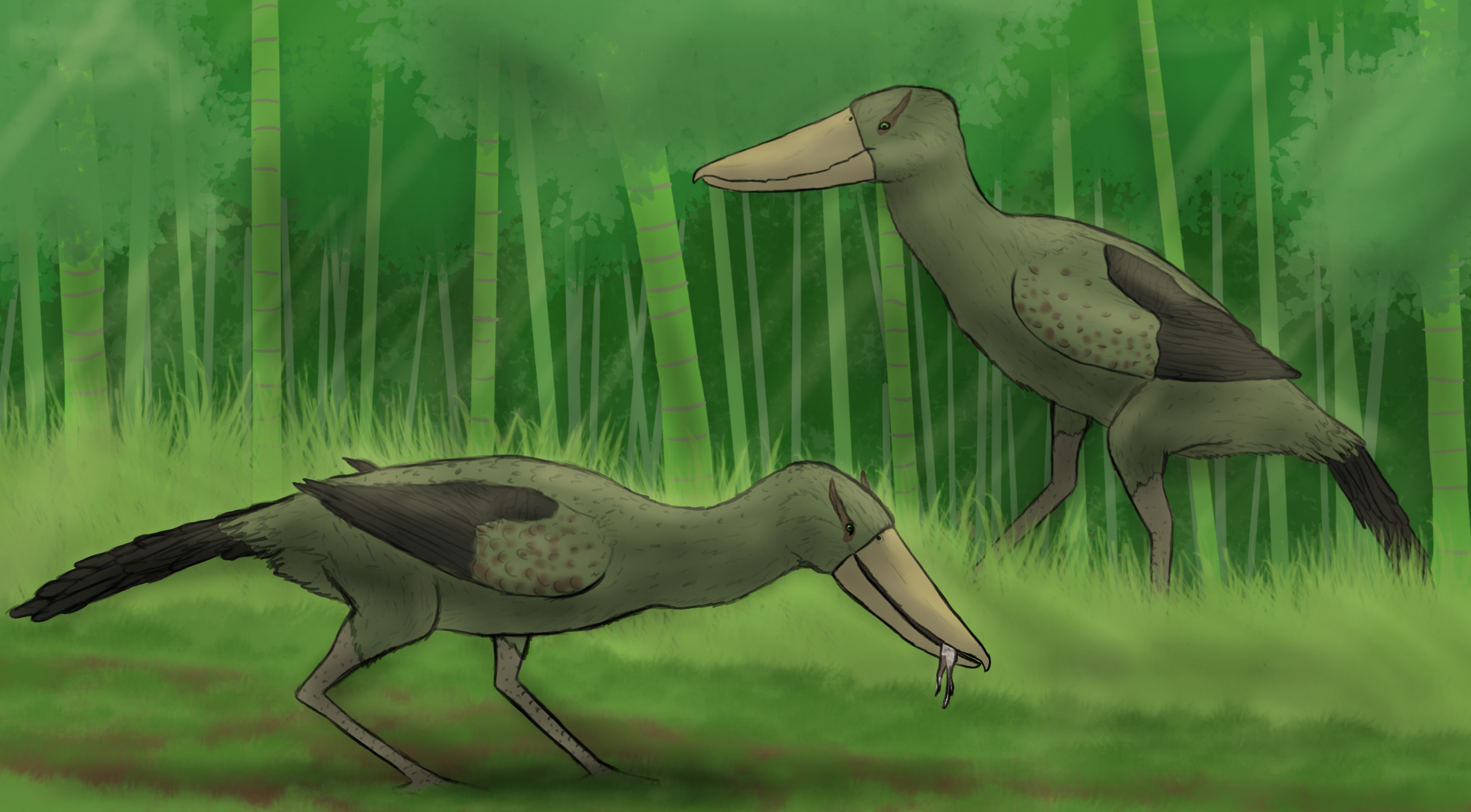HOME | DD
 mking3000 — The Fencing Bird
mking3000 — The Fencing Bird

#apex #bamboo #beak #bird #crow #digital #evolution #fence #fencing #green #hunt #lemur #planet #plant #predator #social #vatosokay #birdsofprey #digitalpainting #species #speculativeevolution #speculativebiology #speculativezoology
Published: 2022-07-09 08:41:42 +0000 UTC; Views: 959; Favourites: 27; Downloads: 4
Redirect to original
Description
Fencing birds are the apex predators of Gidronia, the northern continent. They live all around the continent in habitats ranging from inland all the way to the shores. Having retained the large brains of their ancestors, they are quite intelligent. They usually hunt in packs, and they share the meal afterwards. Their social lives are complex, even though there is no discernable hierarchy between members of the pack. There are "leaders" in a pack who are the brooding mothers that stay behind to protect the nests. During egg development, these mothers instruct the others when to go hunting. Their language is similar in structure to that of their ancestors, the crows. Vocal sounds are supplemented with beak clacking, which can change the meaning of a sound or add complexity.
After the eggs hatch, the chicks stay with the pack until they are fully developed adults. Then they usually wander off into unknown territory where they live alone until they find a new pack that they can join. But to join a pack, they need to earn their respect, so that they know that this newcomer will be useful. To do this, the newcomer challenges one of the members to a duel. They always try to do this when everybody is around, so they can gather and watch the fight to determine who won. The duel starts when the challenger starts nodding their head up and down and the opposition does the same. As they walk towards each other, they make low bellowing sounds to intimidate each other and impress the audience. Then they start fencing with their long beaks. The goal is to get the opponent on the ground. Whoever stays on their feet is the winner. If the newcomer wins, they will be welcomed into the pack and can start to socialize. If they lose, they'll either have to find a new group or come back later with more strength and try again.
Having a pack of 8–10 members, they can bring down even the largest prey on this continent, the western slow lemur.

























